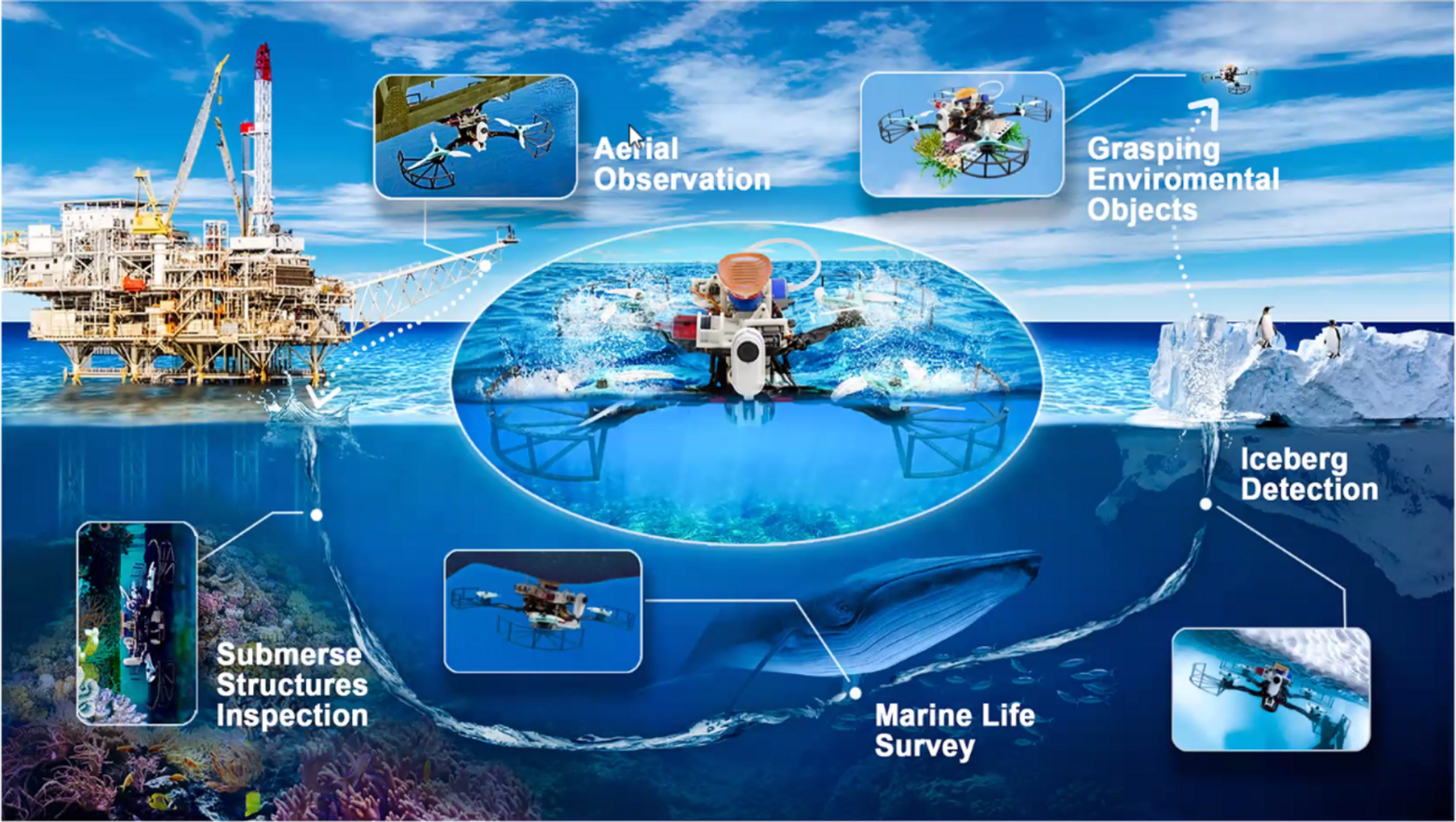Research Seminar: (Prof. Wen Li, Soft Robotics) Aerial-Aquatic Robots Capable of Crossing the Air-Water Boundary and Hitchhiking on Surfaces
Date:
About the seminar talk
I have been interested in the research of Prof. Wen for several years and I am super glad to invite Prof. Wen to give a talk in our department. Many real-world applications for robots—such as long-term aerial and underwater observation, cross-medium operations, and marine life surveys—require robots with the ability to move between the air-water boundary. Here, we describe an aerial-aquatic hitchhiking robot that is self-contained for flying, swimming, and attaching to surfaces in both air and water and that can seamlessly move between the two. We describe this robot’s redundant, hydrostatically enhanced hitchhiking device, inspired by the morphology of a remora (Echeneis naucrates) disc, which works in both air and water. As with the biological remora disc, this device has separate lamellar compartments for redundant sealing, which enables the robot to achieve adhesion and hitchhike with only partial disc attachment. The self-contained, rotor-based aerial-aquatic robot, which has passively morphing propellers that unfold in the air and fold underwater, can cross the air-water boundary in 0.35 seconds. The robot can perform rapid attachment and detachment on challenging surfaces both in air and underwater, including curved, rough, incomplete, and biofouling surfaces, and achieve long-duration adhesion with minimal oscillation. We also show that the robot can attach to and hitchhike on moving surfaces. In field tests, we show that the robot can record video in both media and move objects across the air/water boundary in a mountain stream and the ocean. We envision that this study can pave the way for future robots with autonomous biological detection, monitoring, and tracking capabilities in a wide variety of aerial-aquatic environments.

My views and what I learned from the seminar talk
- Prof. Wen’s research is exciting and inspiring!
- The research from Prof. Wen on the soft robotics even inspires the science. In particular, the research from Prof. Wen aims to study the mechanism of the biology and try very hard to apply these findings to the robotics research! This is powerful!
- How to write a good paper that is potentially could be accepted by the top journals such as science robotics?
- The first point is that: your paper is very scientific that beings some new findings in terms of the principles of the biology or something else.
- The second point is that: your paper is very powerful that provide super acurate, or low-energy performance, this can also be potentially publishable in these mentioned top journals
- The figures should be well designed!!!
- Can you provide some insights about the combination of the navigation research and the biology research?
- One of the possible problem can be the navigation in deep sea! How to learn from the biology living in the deep sea and to develop some new solutions for the navigation?
References
- [1] Using latex to input equations in Overleaf Link.
- [2] Li, L., Wang, S., Zhang, Y., Song, S., Wang, C., Tan, S., … & Wen, L. (2022). Aerial-aquatic robots capable of crossing the air-water boundary and hitchhiking on surfaces. Science Robotics, 7(66), eabm6695.
